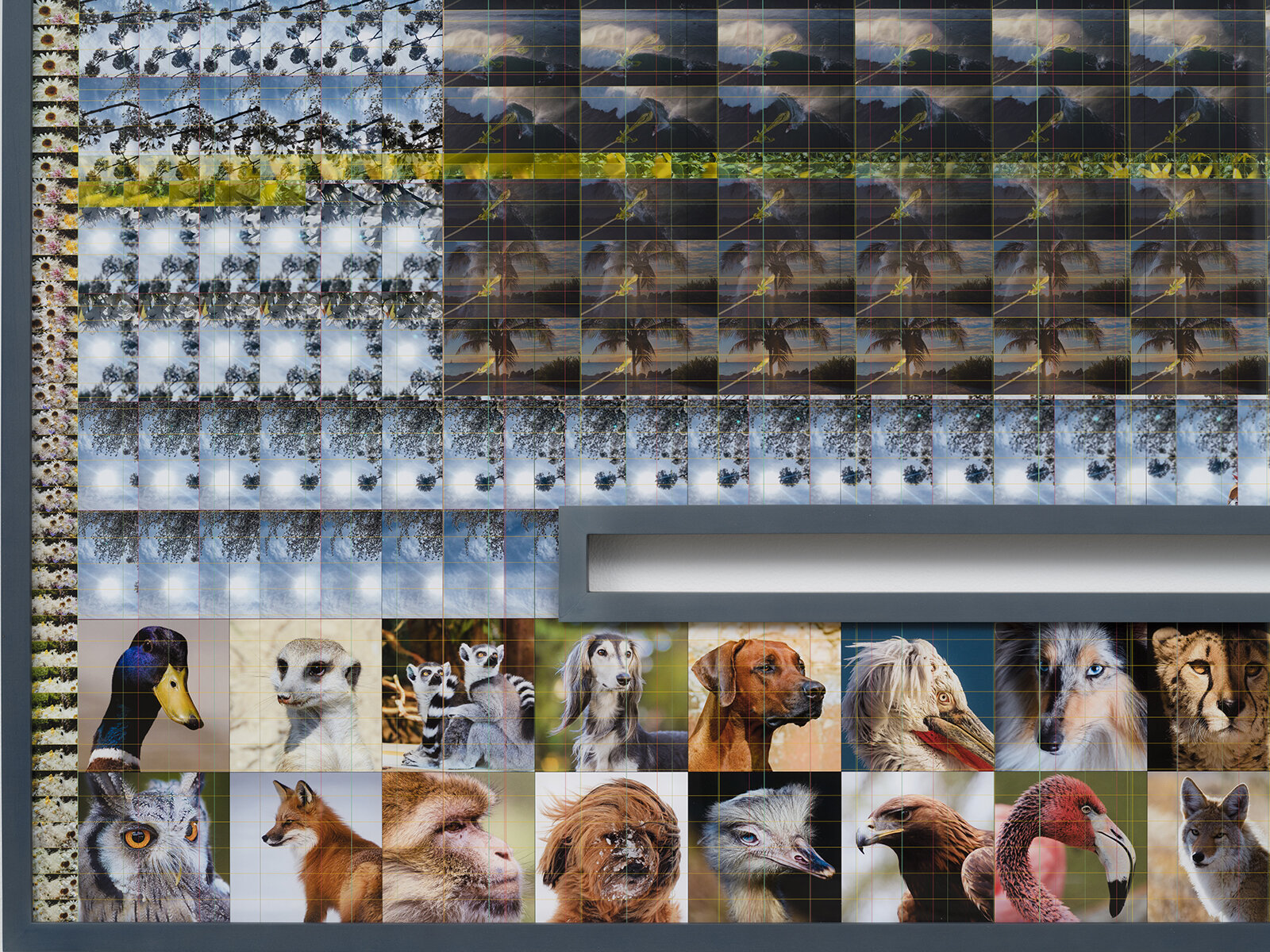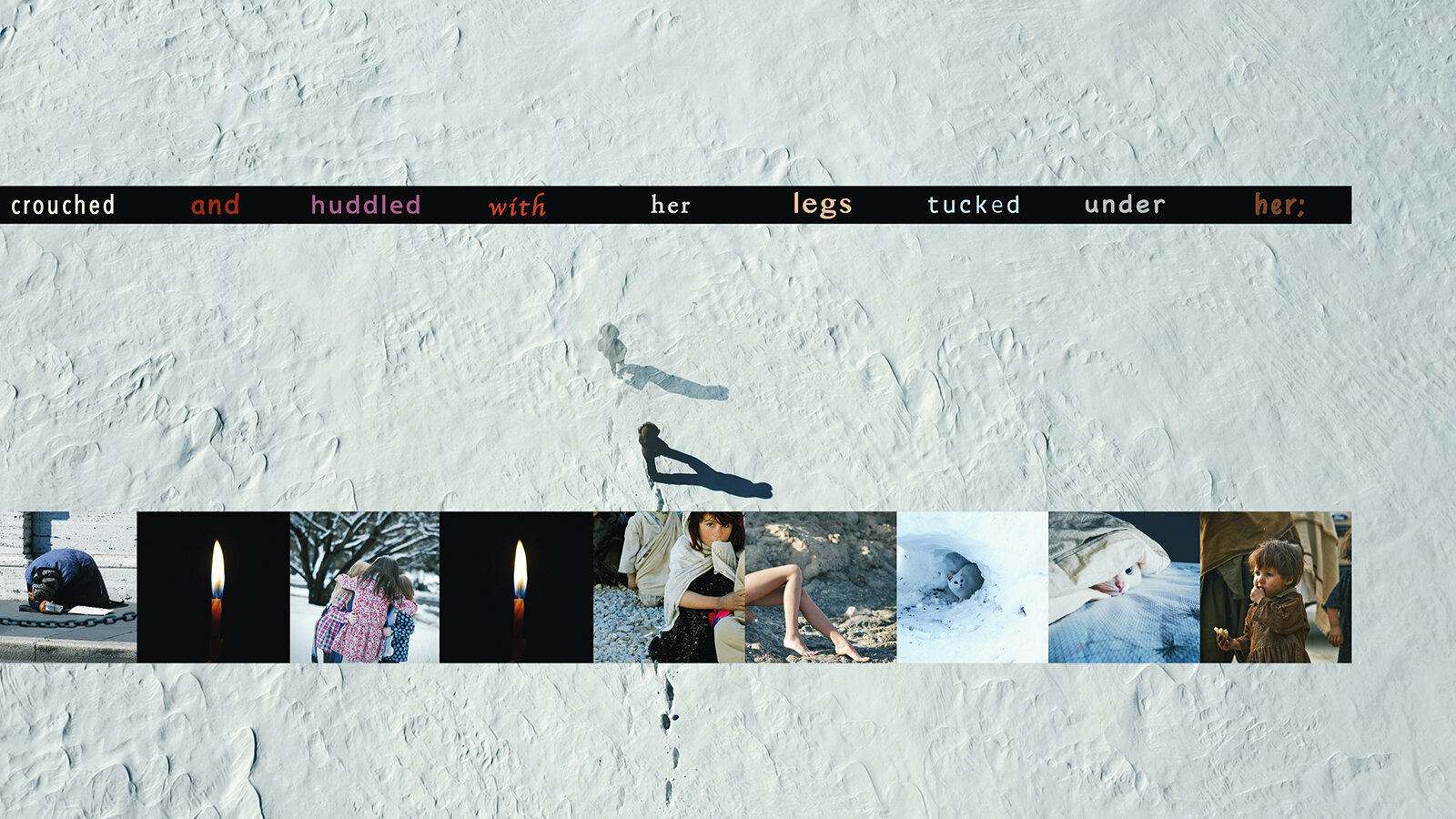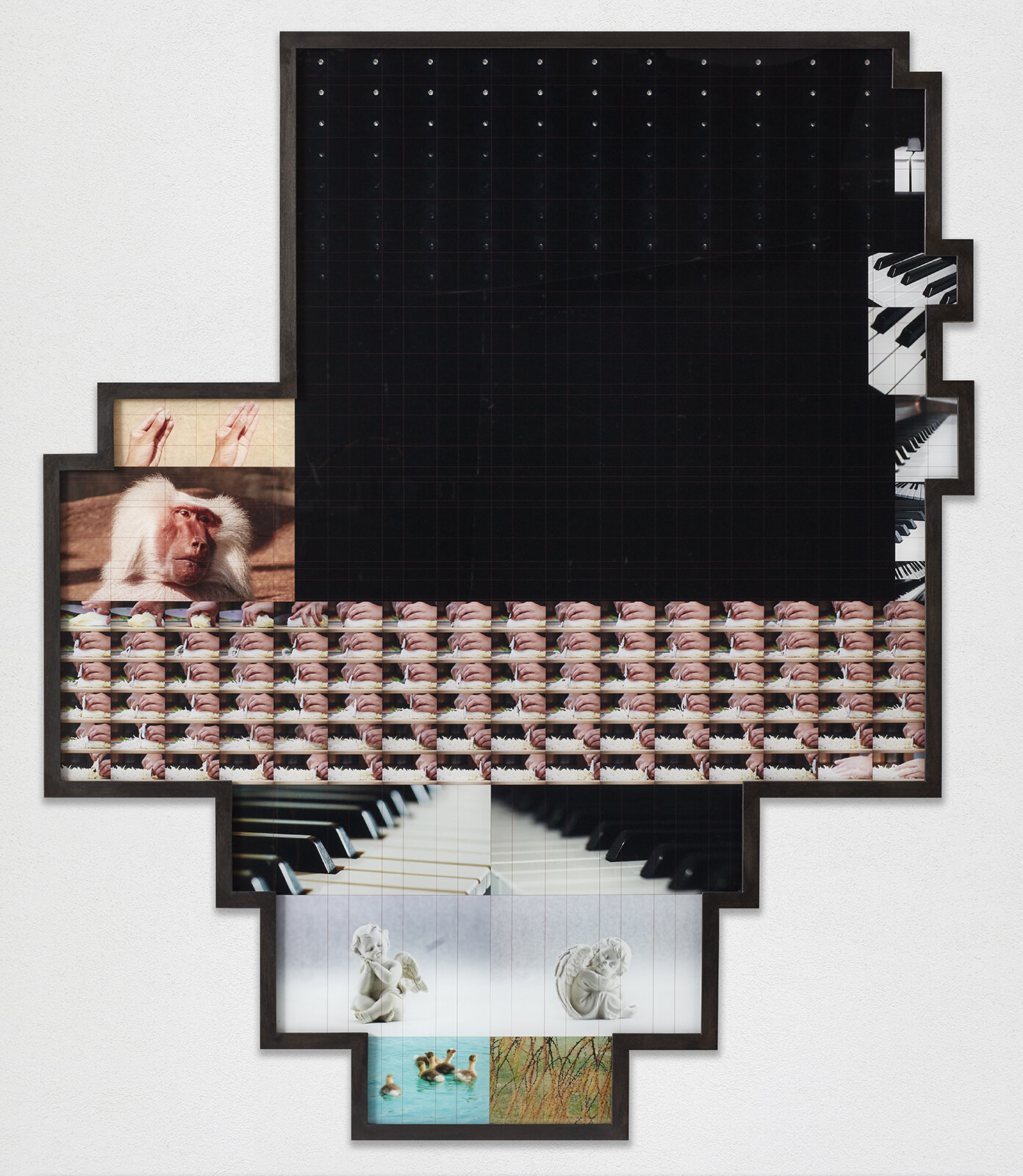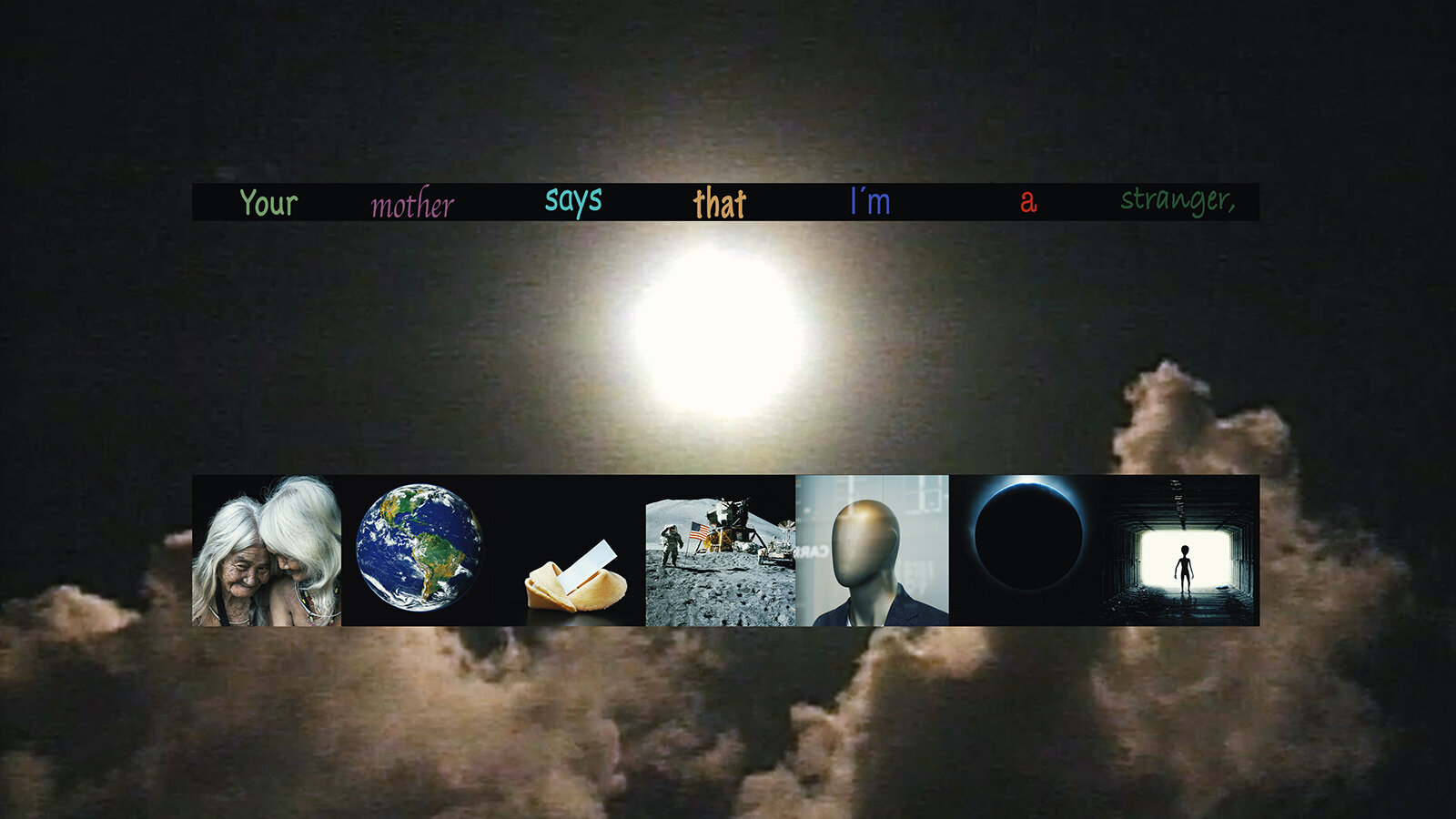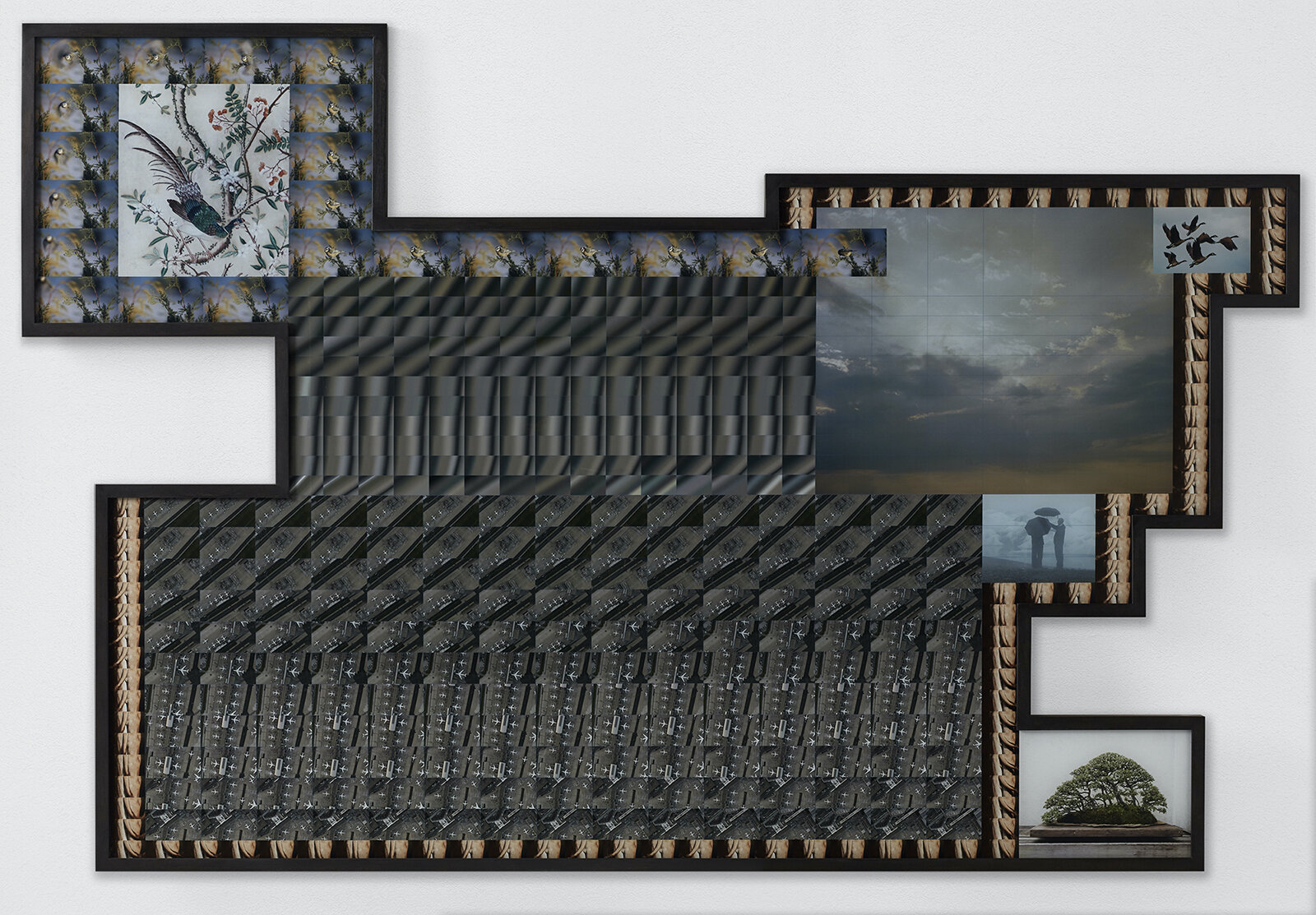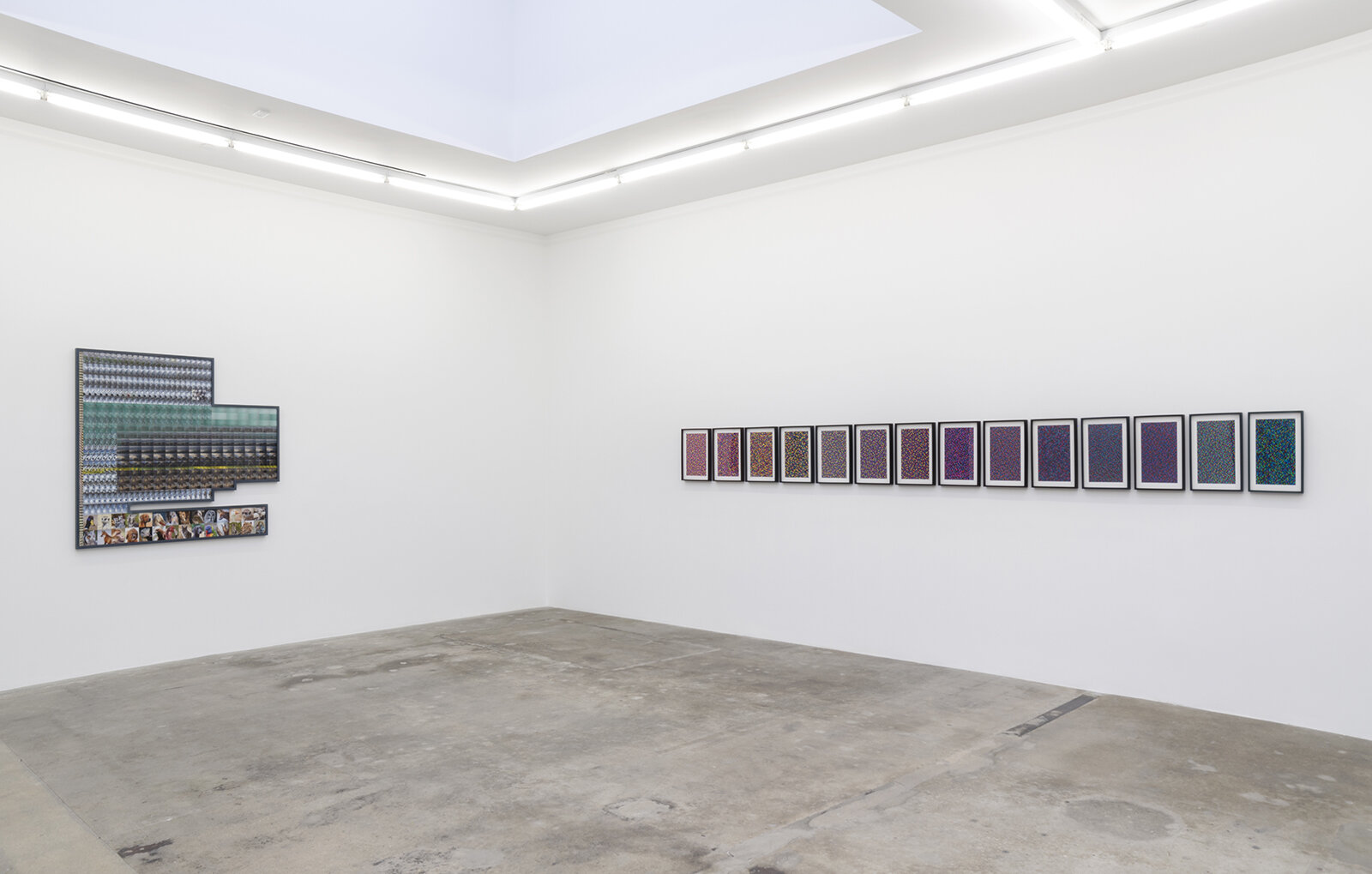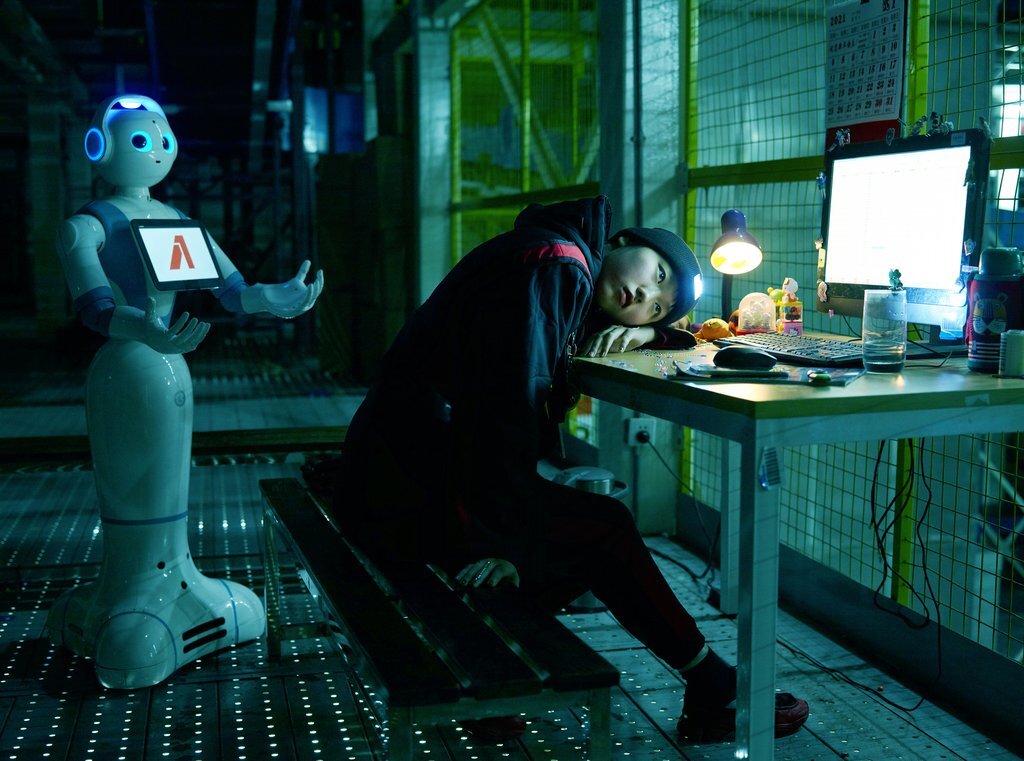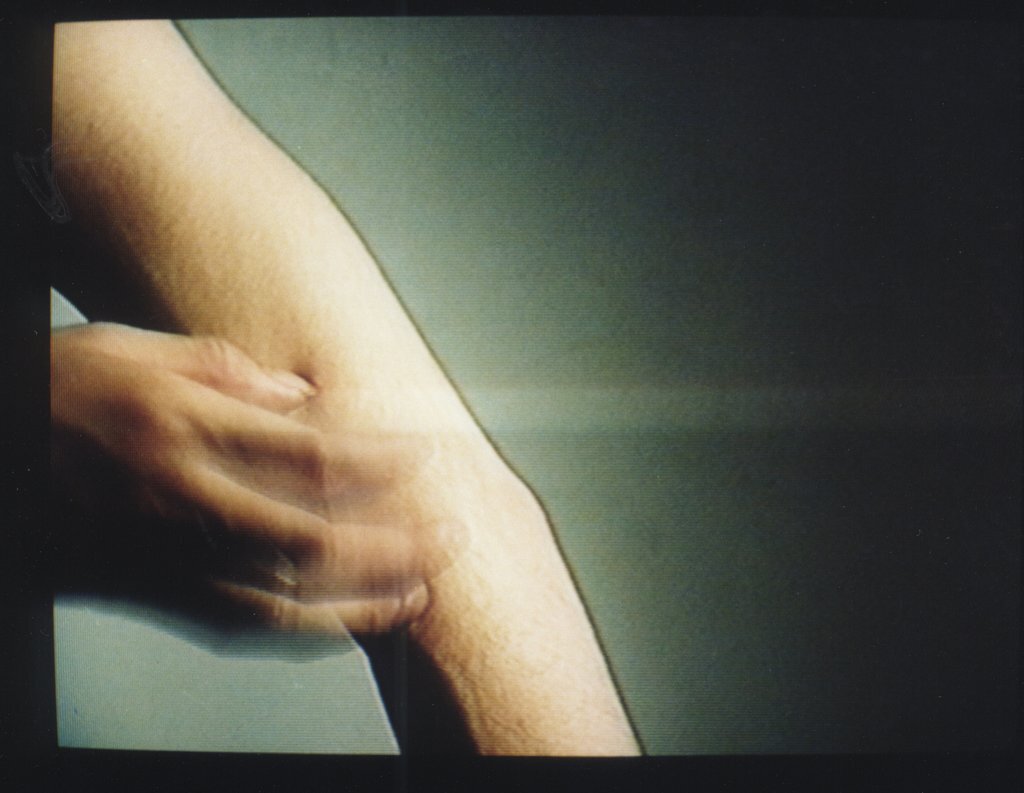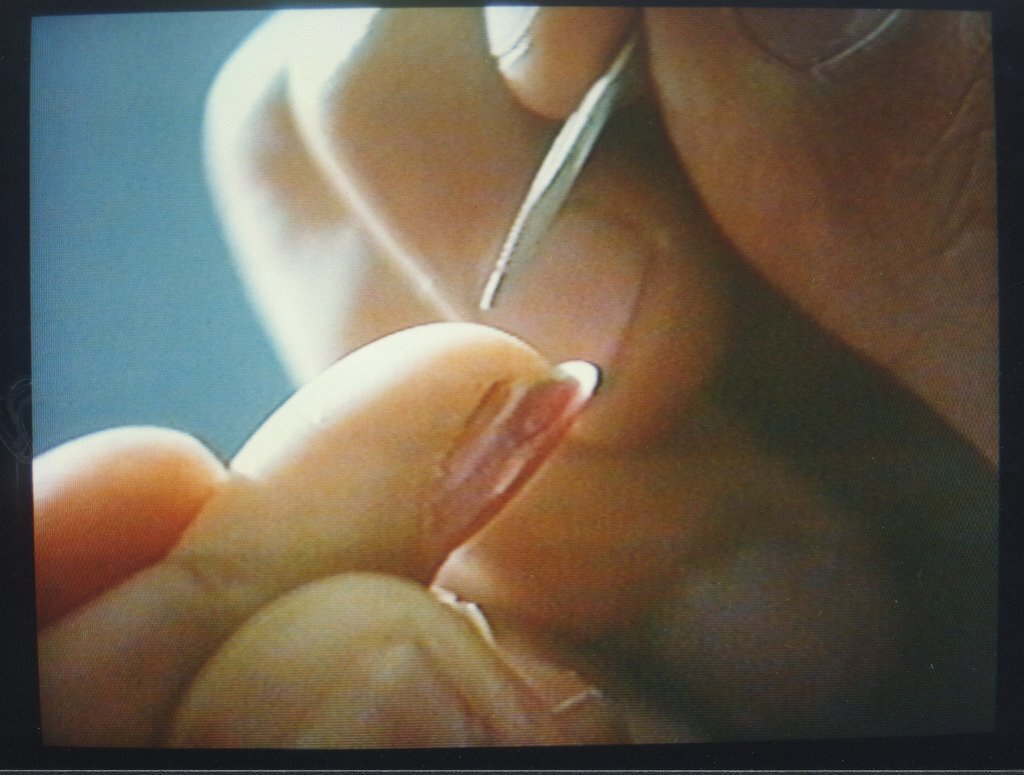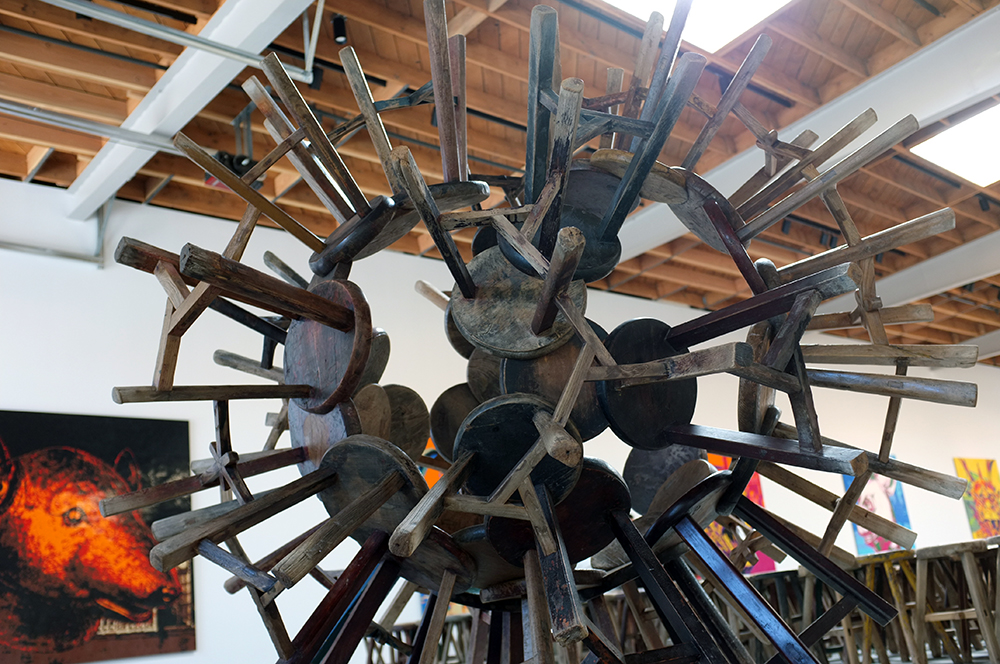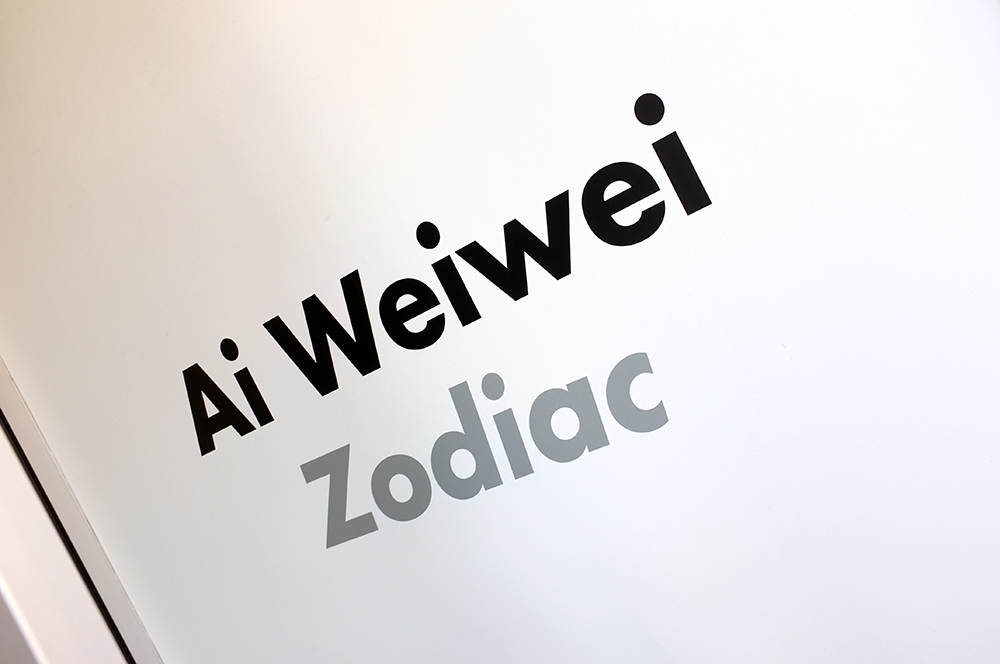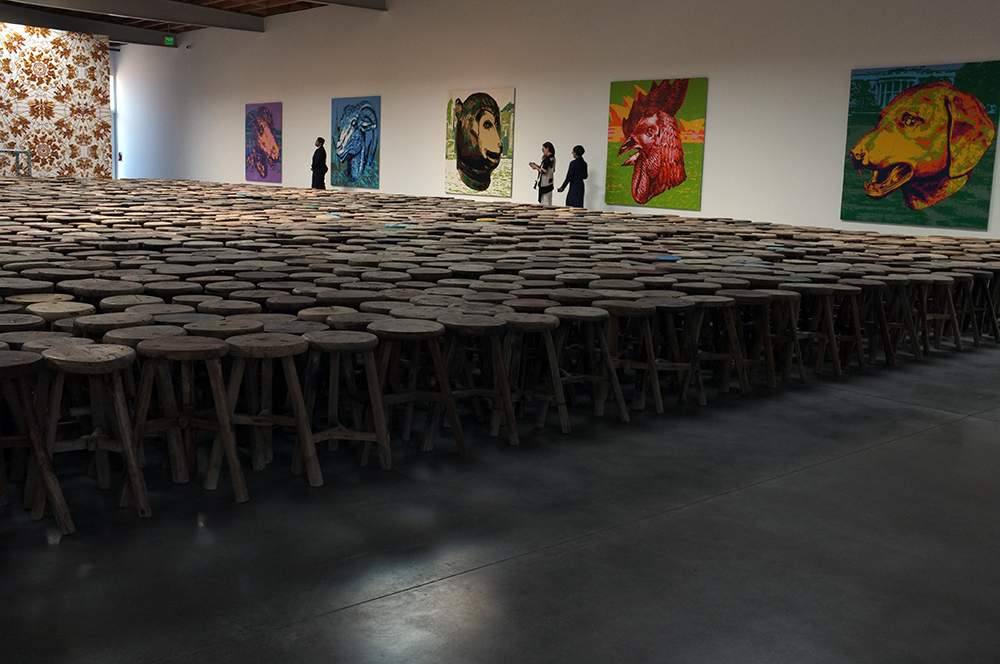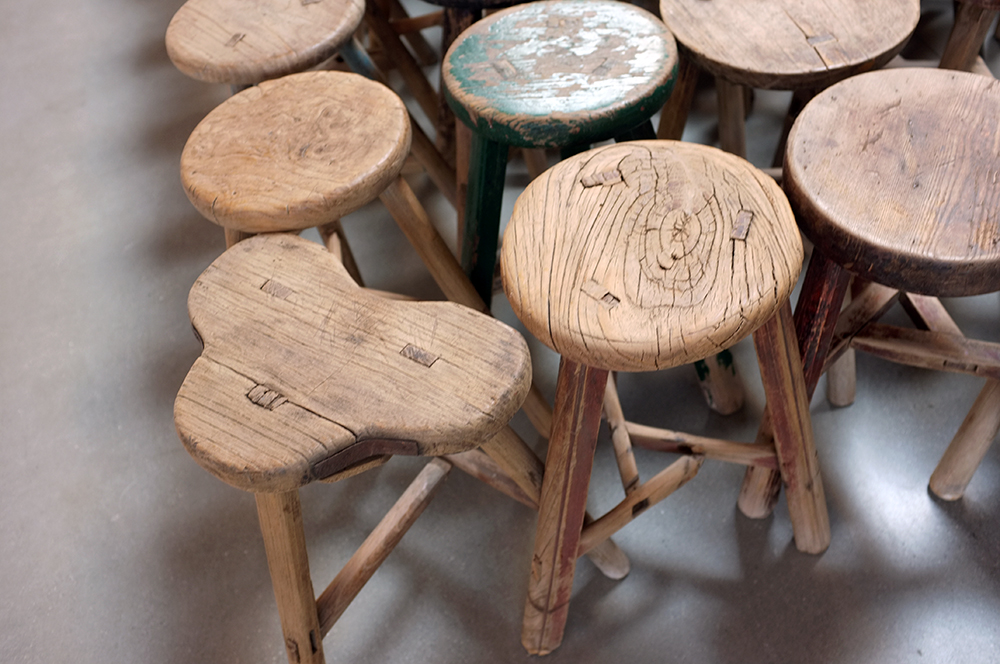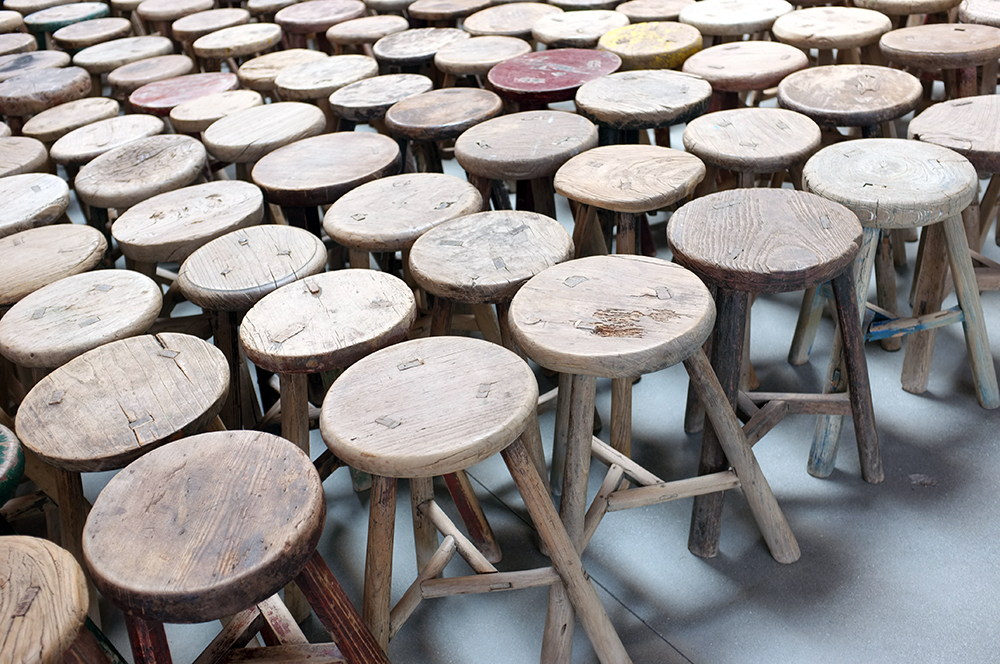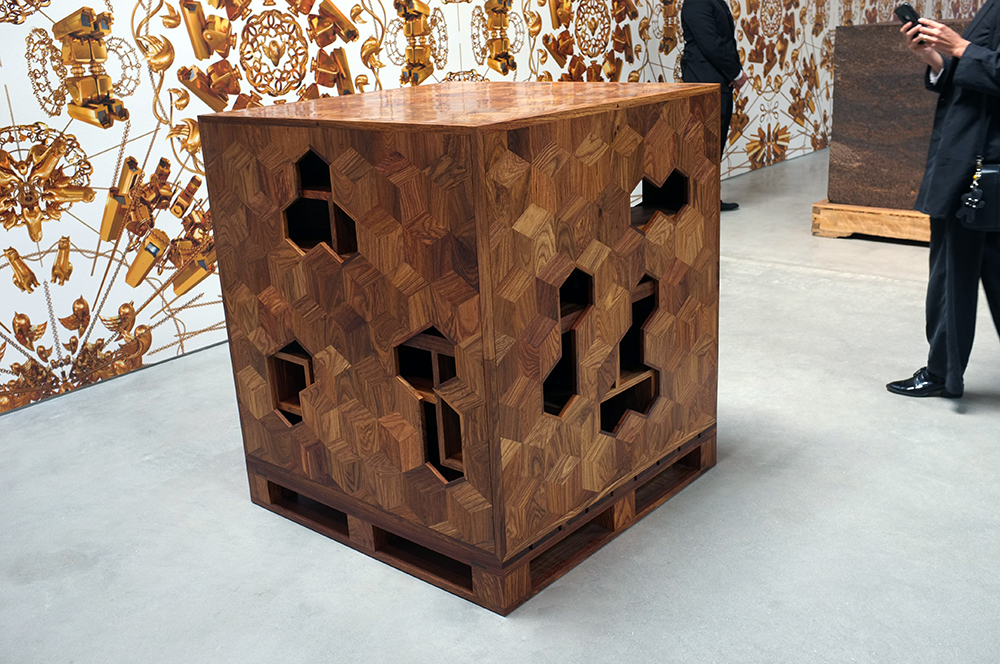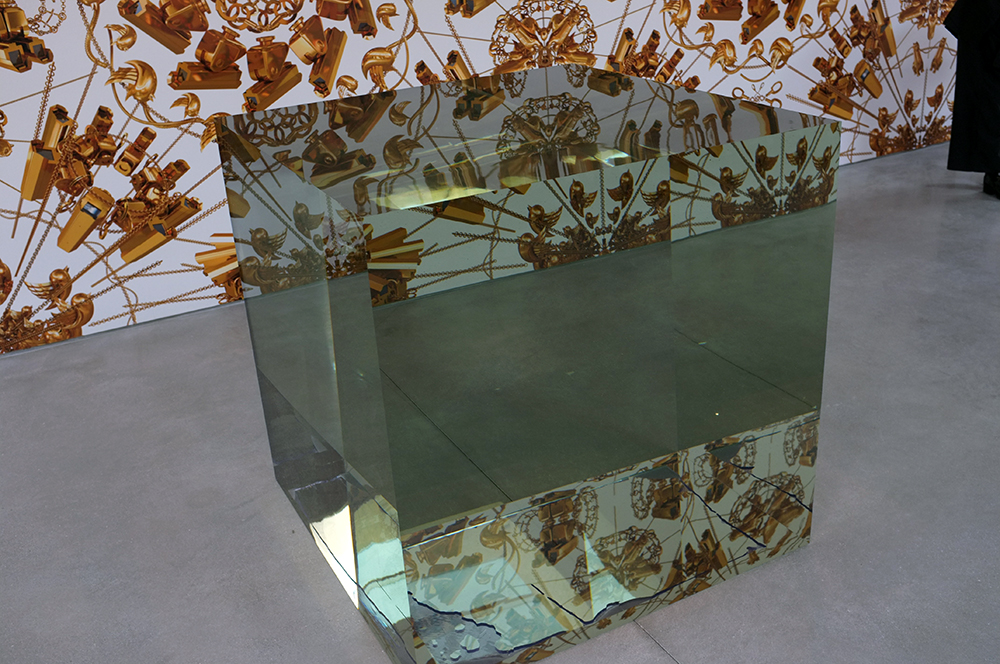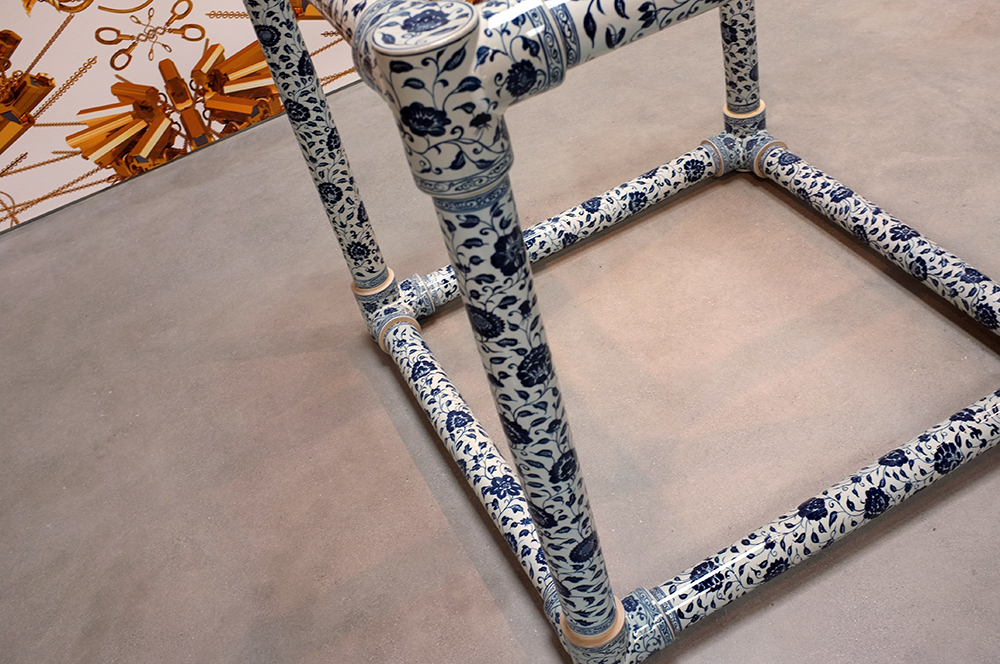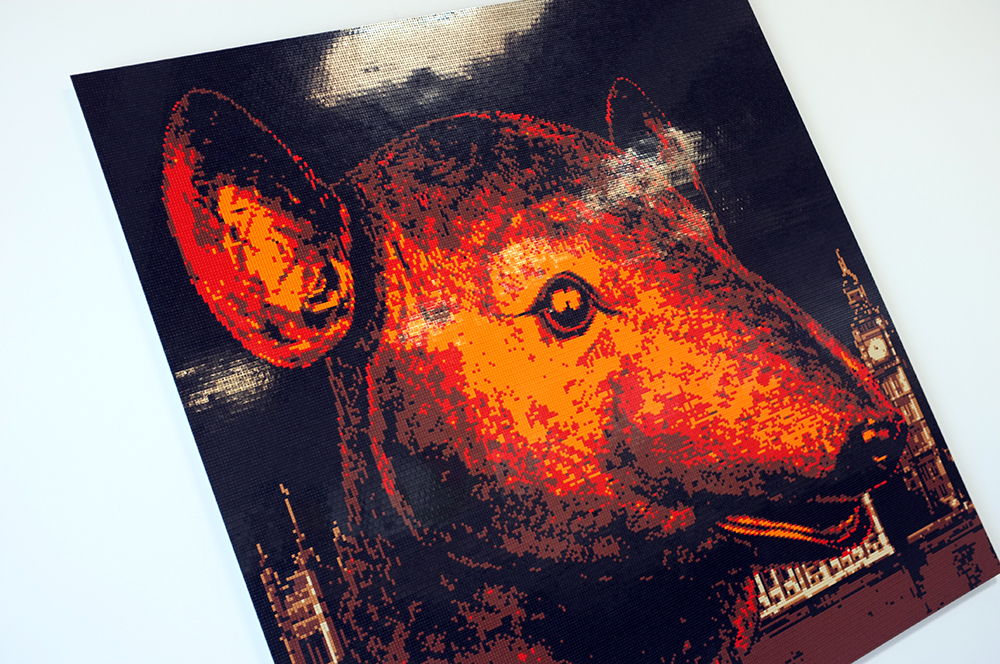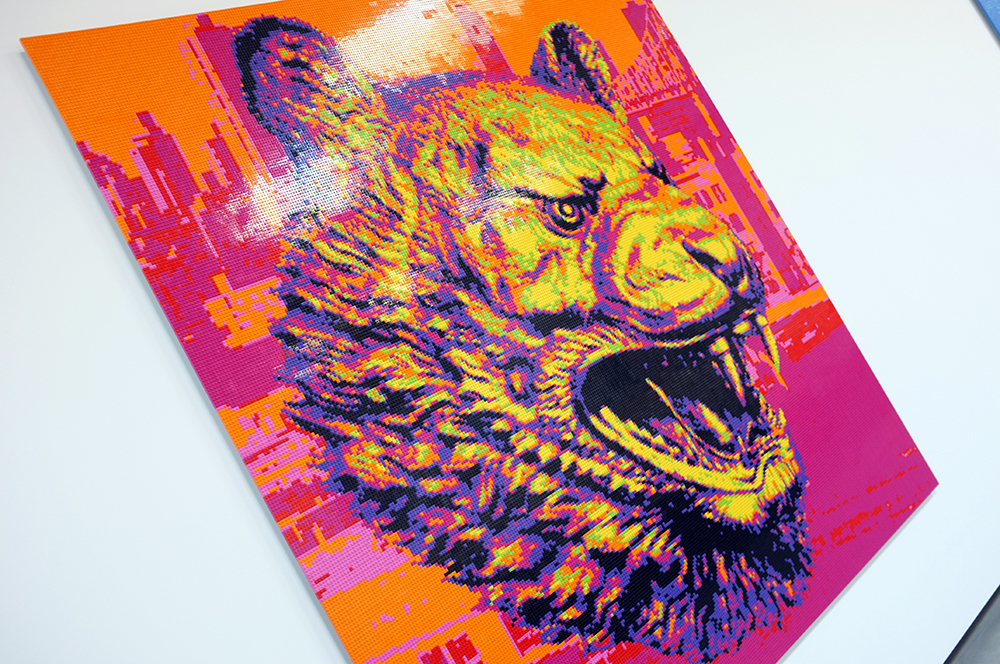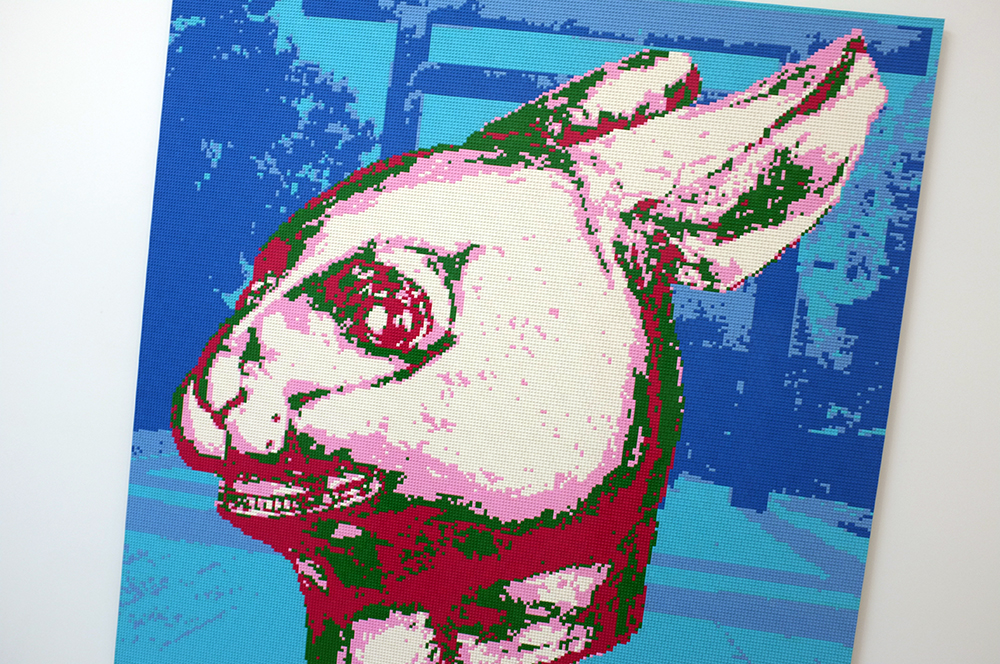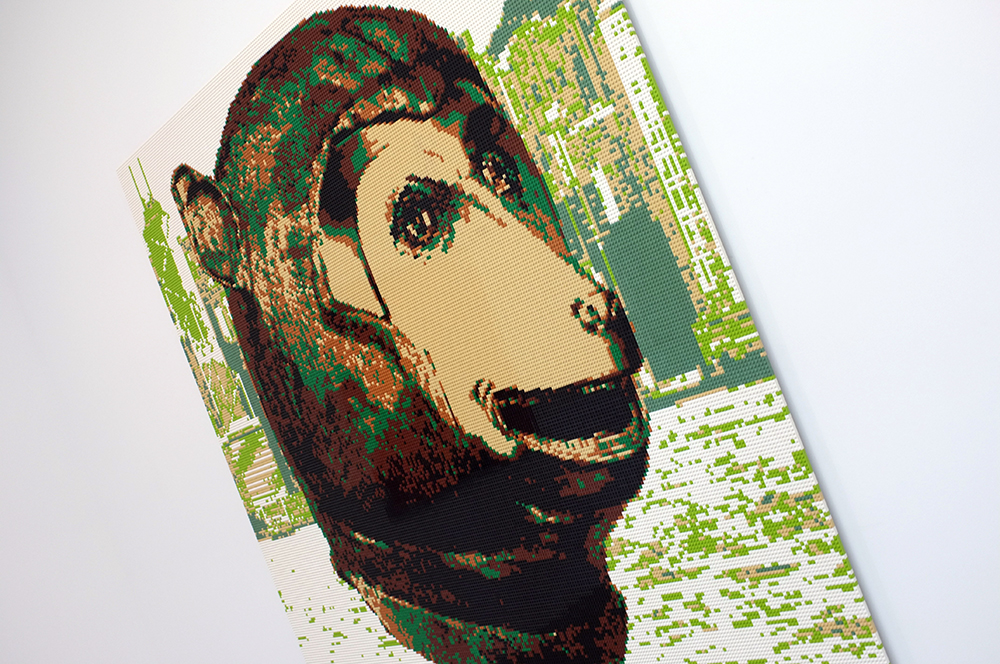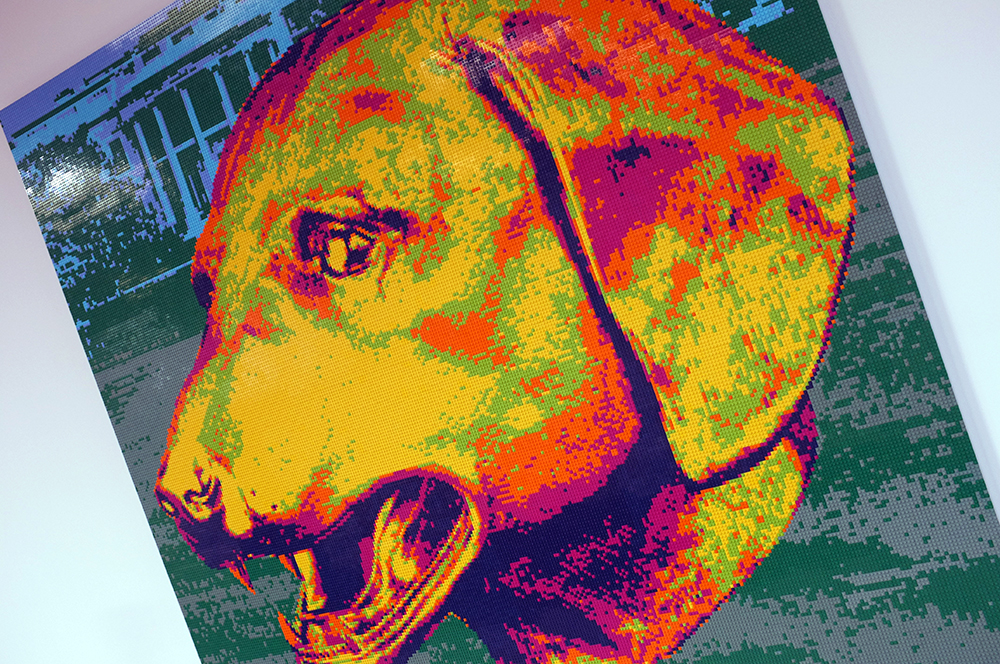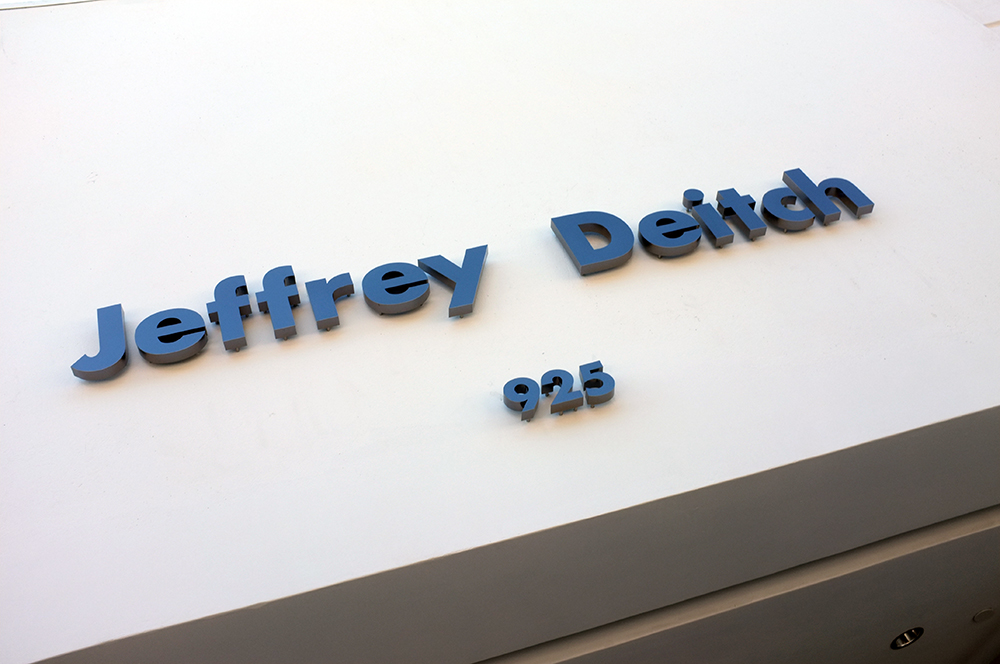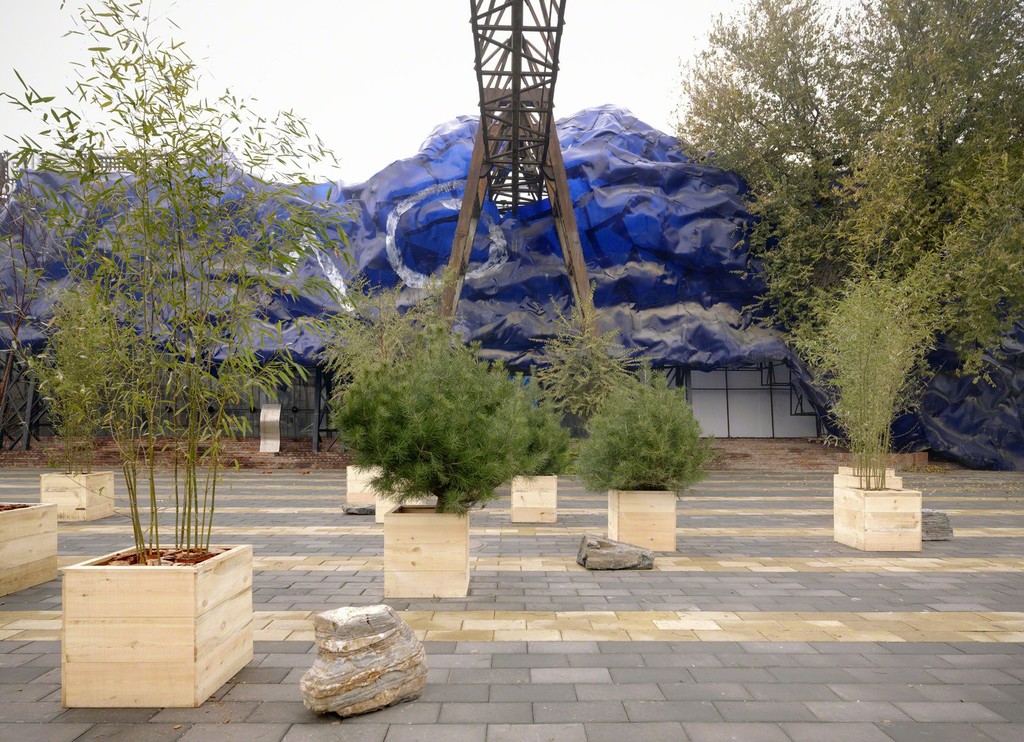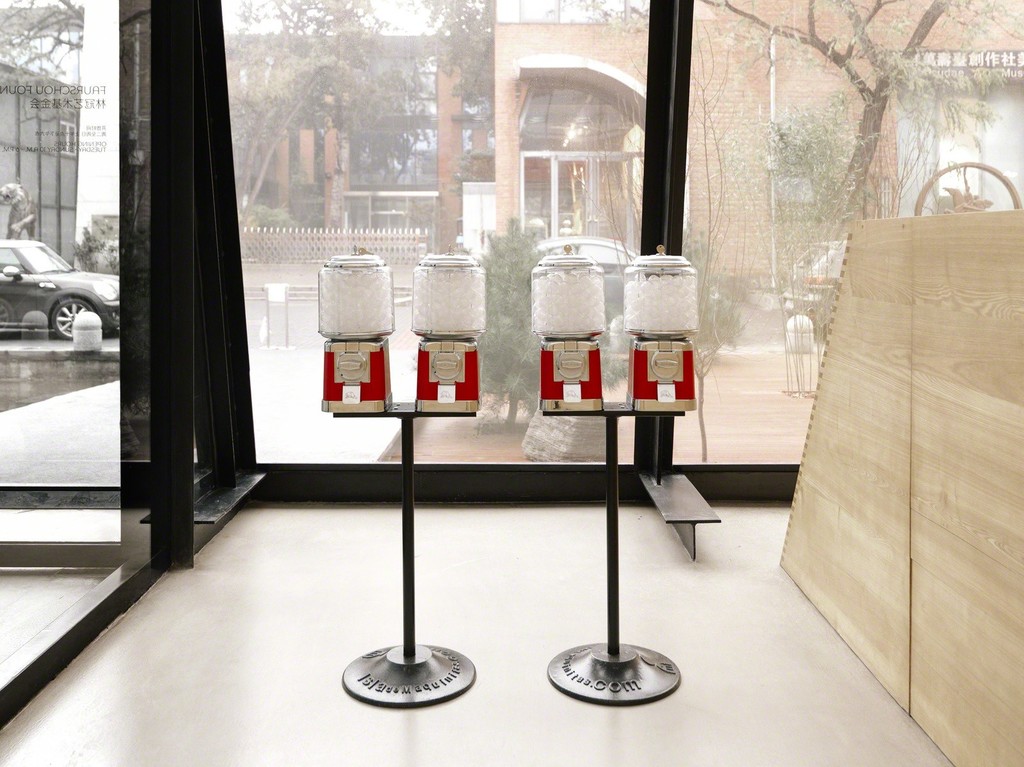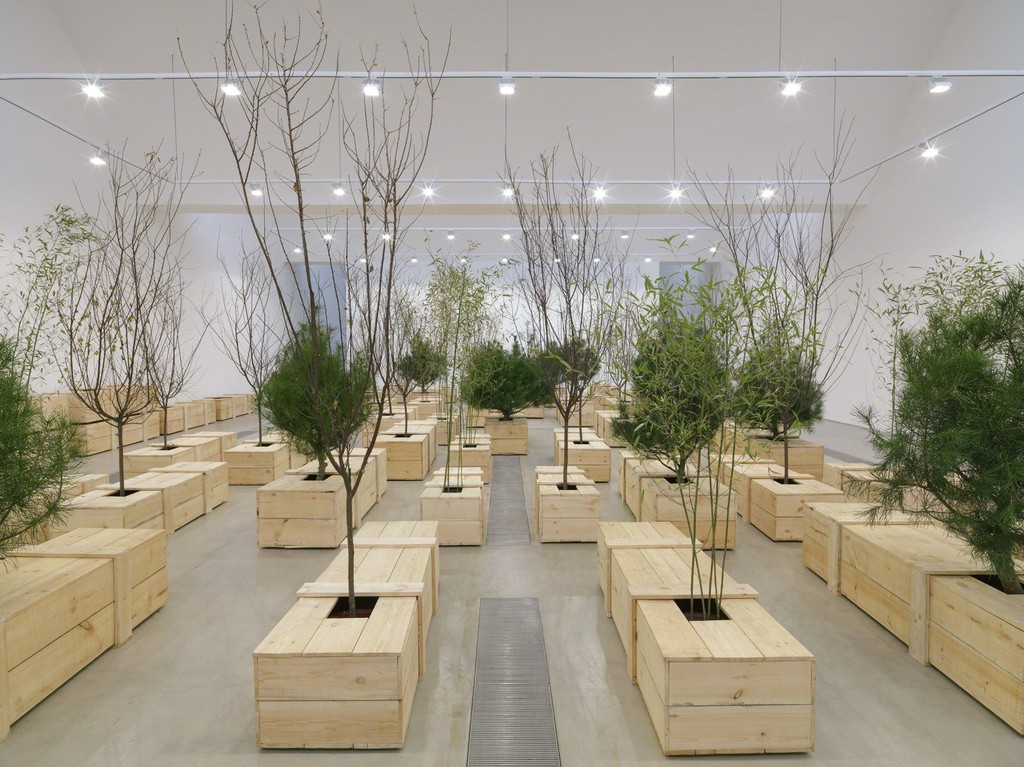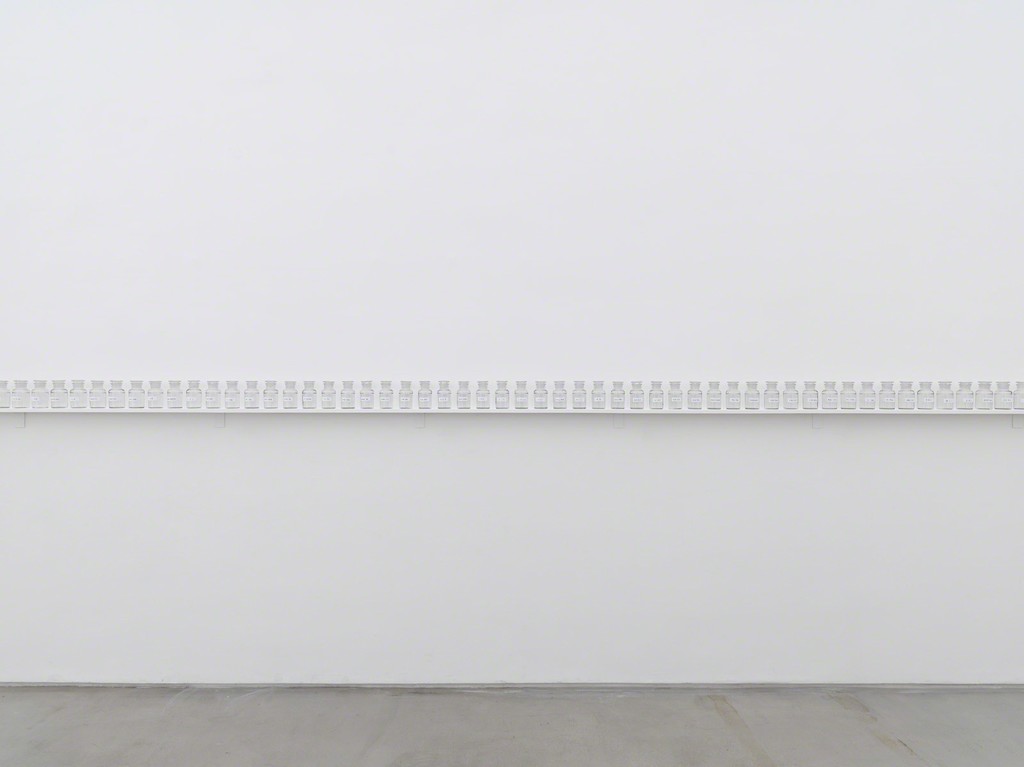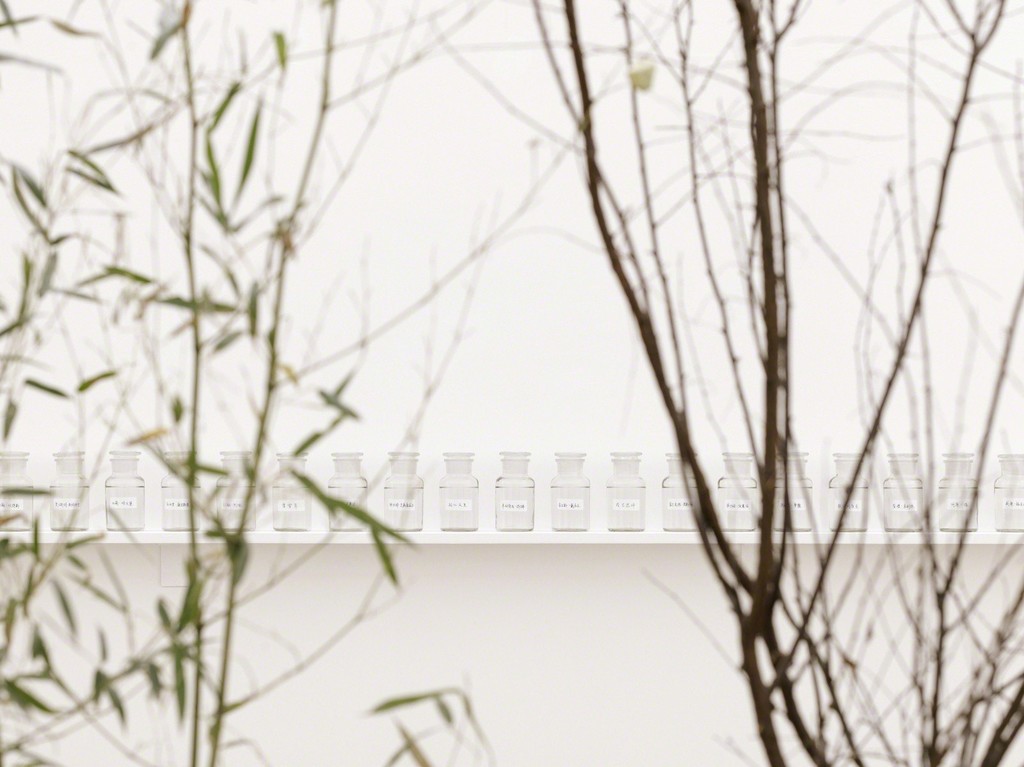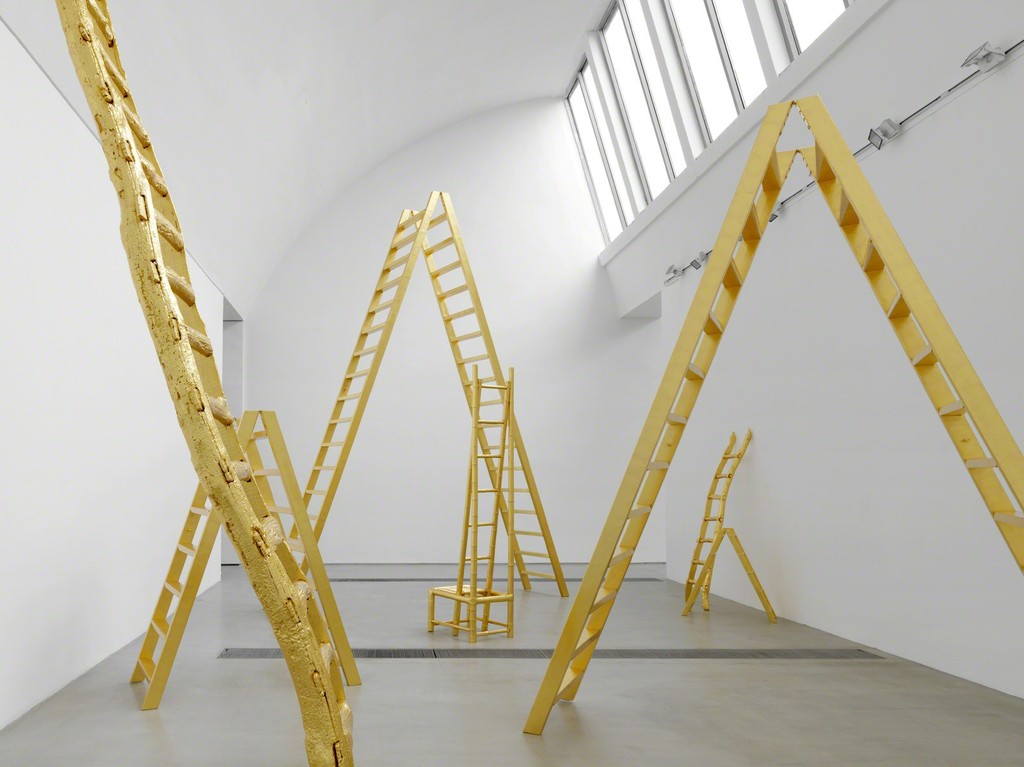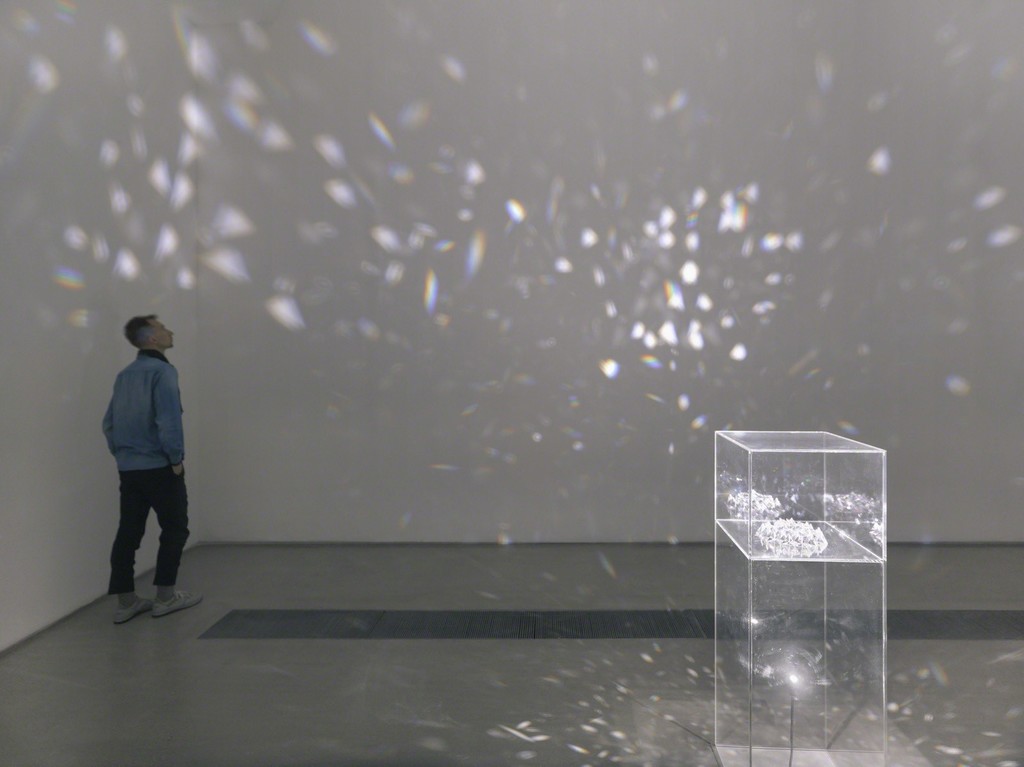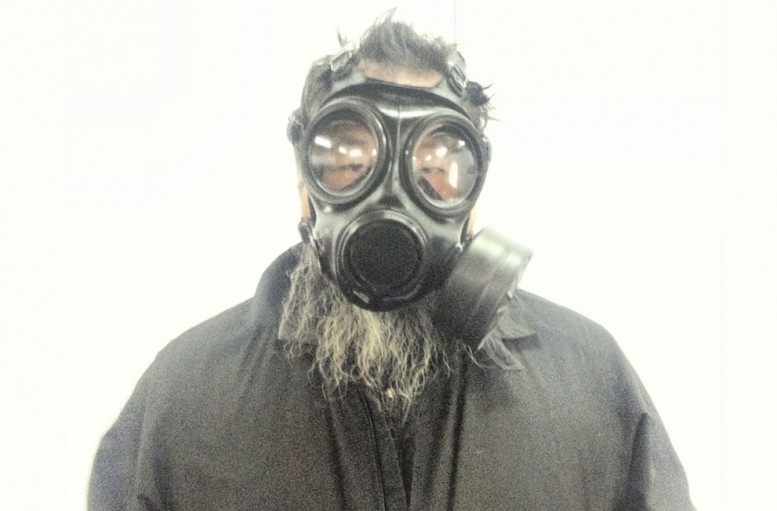One week before this interview, Ai Weiwei’s studio in Beijing was bulldozed by Chinese authorities without any warning. Known for his brazen acts of dissent, Ai has not only challenged authoritarianism in China – the revolutionary polymath has also been extremely vocal about the worldwide refugee crisis. In a constant limbo state of exile, Ai has been living and working in Germany since getting his passport back in 2015. This fall, he will be taking over Los Angeles with three major exhibitions that he sees as one singular expression. At UTA Artist Space—which is housed in a 4,000-square-foot former diamond-tooling facility conceived and designed by Ai—the artist will be showing a series of sculptural works made from marble, including his iconic CCTV camera on a plinth, a Damoclean symbol of our post-capitalist era of state-sponsored surveillance. Central to the exhibition will be Humanity, a performative work and social media campaign that encourages visitors to the gallery to read a passage from Ai’s recent book on the refugee crisis—the footage will be compiled in a 30-minute video. On view until March 2019 at Marciano Art Foundation, Life Cycle will also explore the crisis of global displaced persons by drawing on the artist’s personal experiences and Chinese mythology. The show will include his famous work, Sunflower Seeds, which is comprised of over 49 tons of porcelain sunflower seeds carved and crafted by 1,600 artisans in Jingdezhen, in China’s Jiangxi province. Finally, at Jeffrey Deitch’s new Hollywood Gallery, Ai will present his installation of over 6,000 salvaged wooden stools from the Ming and Qing dynasties, which were gathered from villages across Northern China, thus serving as quotidian ciphers of cultural erasure and human existence. Read more.
Liu Shiyuan Presents For Jord @ Tanya Bonakdar Gallery In Los Angeles
For Jord, Liu Shiyuan’s first solo exhibition in Los Angeles, is comprised of photography, video and drawings, that revolve around a fictional character named Jord. In Danish, the word jord translates to ‘earth’ or ‘dirt’, and as a name, it means ‘divine being’ or ‘peace’. In Liu’s work, this character is not human, not from the past or the future, and has no race or gender. They are the amorphous, symbolic protagonist who binds the work across ideological and formal narratives.
In her photography practice, Liu uses personal iPhone videos and Google image searches as primary sources for her work. By searching words and phrases online, Liu identifies images with multiple meanings that can be attributed to the same word, offering a diversity of perspectives and interpretations. At her studio in Copenhagen, Liu searched the word “Jord” on Google images, resulting in images of dirt. Interestingly, many of the thumbnails featured two hands holding soil - giving the dirt a border, a containment and a sense of belonging. As a country, a culture, or any community with boundaries, the character Jord represents our connected and shared nature. For Liu Shiyuan, a Chinese national living in Denmark, this common ground of all humans is an important aspect of our livelihood.
Liu’s new film, For the Photos I Didn’t Take, For the Stories I Didn’t Read, is inspired by Danish author Hans Christian Andersen’s book The Little Match Seller. The story portrays a penniless young girl on New Year’s Eve trying to sell matches to make money for her family. From the cold and snowy street, she peers into other homes, imagining a better life. As she fantasizes, she peacefully passed away in the dawn of the new year, an abrupt and tragic end to the tale. In 1920, The Little Match Seller was translated to Chinese and included in educational books throughout the country. The story was used by the Chinese government during the Cultural Revolution as a way of explaining how the communist party was saving China from the problems of Western capitalism.
Liu reintroduces the audience to The Little Match Seller with a stream of images the artist found online by individually searching every word in the entire text. By recontextualizing the narrative, the viewer simultaneously reads both stories: the written version from 1845 and a parallel story created by today’s imagery. Every time the word “SHE” or “HER” appears in the text, Liu uses portraits of young girls from around the world - girls from poor families and wealthy families, from refugee camps and of different ethnicities. The result is surprisingly complex and unified. From one perspective it is clear to see the shadow of post-war society; from another, there is no change at all.
Set softly behind the rolling text and images, otherworldly environments create an atmosphere of the unknown, as if the viewer is looking onto earth from another universe. The idea of being a foreigner, an outsider or an alien is a frequent theme in Liu’s practice. Having lived in many different countries: growing up in China, studying in the United States and now living in Denmark — the same country as Hans Christian Andersen — Liu has a unique perspective on the cultural and political differences in these countries. For the Photos I Didn’t Take, For the Stories I Didn’t Read contemplates and questions larger issues of communism, socialism, capitalism and the affects on the individual — especially during the holiday season when indulgence and extravagance are celebrated, disparity and inequality become more pronounced. By bringing up these questions, Liu leaves the viewer to observe our differences, consider alternative perspectives and most importantly, understand our shared connection as humans.
For Jord is on view through January 30 @ Tanya Bonakdar Gallery 1010 N Highland Ave Los Angeles, CA 90038.
Micro Era: Media Art from China @ Kulturforum In Berlin
From documentary film images, and the adapted use of classical film language to the aesthetics of Japanese Anime, the works of Micro Era focus on and explore the relationships between mind, body and technology – with installations and single-channel videos ranging from the 1980s to the present. Historically, within the Euro-American context, video art is often regarded as a democratising art form – through the rapid circulation of information and global events by fast-access technologies. Cao Fei, Fang Di, Lu Yang, and Zhang Peili scrutinise the seductive thesis of this democratisation by reflecting in their visual language the mass production of goods as well as how images and virtual subjectivities are produced and consumed, and how we understand our world through imaging technology. At the same time, in the cross-generational exhibition with documentary, narrative and installation references and the expansion into virtual space, the central directions in the development of media art in China are presented. Micro Era is on view through January 26 2020 at Kulturforum Stauffenbergstraße 41 10785 Berlin. photographs courtesy of the Staatliche Museum
Opening of Ai Weiwei's 'Zodiac' @ Jeffrey Deitch Gallery in Los Angeles
Jeffrey Deitch has just opened his new Los Angeles gallery with a museum-scale exhibition entitled, Zodiac, by Ai Weiwei. This inaugural exhibition at Jeffrey Deitch Gallery Los Angeles, is one of three major exhibitions by the artist concurrently on view in Los Angeles.
The center of the space is filled by one of the artist’s most remarkable works, Stools (2013), comprised of 5,929 wooden stools from the Ming (1368-1644) and Qing (1644-1911) dynasties and the Republican period, gathered from villages across northern China. Very few of these stools remain in Chinese households today, but they were once a ubiquitous staple of domestic life. Each stool reveals traces of use and evokes the experience of generations of lives. Ai Weiwei admires the stools for their simple design and solid structure, a design language that remained unchanged for thousands of years.
Complementing the stools is a new series of Zodiac works composed from thousands of plastic LEGO bricks. The set of twelve works incorporates imagery from two well-known series by the artist. The twelve LEGO Zodiac animal heads deriving from his sculpture series Circle of Animals / Zodiac Heads (2010) are overlaid onto twelve landscapes and monuments from Ai’s Study of Perspective (1995–2003) series of photographs. He appreciates how LEGO is accessible to everyone, especially young people. His use of LEGO components is a response to the pixelated structure of digital images.
Both the Stools and the Zodiac installations are assembled from accumulated elements, a creative method that Ai has employed in many of his best-known works. His interest in accumulation and collecting relates to his desire to understand how an individual relates to society, to memory, and to objects that evoke a particular time. His use of antique stools and modern LEGO bricks are examples of how his art redefines these elements, subverting their history and nature.
The sculpture Grapes (2017) reassembles the stools into a completely different shape but uses the original structural logic so that it remains true to its original form. It provides a graceful and whimsical counterpoint to the accumulation of the 5,929 stools. Zodiac is on view through January 5, 2019 at Jeffrey Deitch Gallery 925 N Orange Drive, Los Angeles. photographs by Oliver Kupper
Vhils "Debris" Neon Installation At Pier 4 In Hong Kong Presented by HOCA
Presented by HOCA, “Debris”, the first solo exhibition of celebrated Portuguese artist Alexandre Farto AKA Vhils in Hong Kong is a multi-site initiative that will include an intervention on one of the city’s iconic trams and an exhibition at Pier 4 (open between 22 March– 4 April 2016), encouraging visitors to explore the city and reflect on the nature of the urban environment through the lens of the artist. The Pier 4 Solo Exhibition will be open until April 4.
Yoko Ono "Golden Ladders" @ Faurschou Foundation in Beijing
Faurschou Foundation presents the first solo exhibition with the world-renowned artist Yoko Ono in Beijing. The exhibition will offer the public an opportunity to participate in her interactive art and take part in her honest and utopian, yet forceful, universe and life philosophy. The exhibition shows a variety of works from Yoko Ono's extensive artistic career, and includes important pieces from her early Fluxus and Conceptual work. Ideas, rather than materials, make up the core of Yoko Ono’s art. Based on verbal or written instructions for actions that are utopian, ephemeral and performable, Yoko Ono presents viewers with art which becomes a shared mental or physical experience. Yoko Ono: Golden Ladders will be on view until July 3, 2016 at the Faurschou Foundation in Beijing


